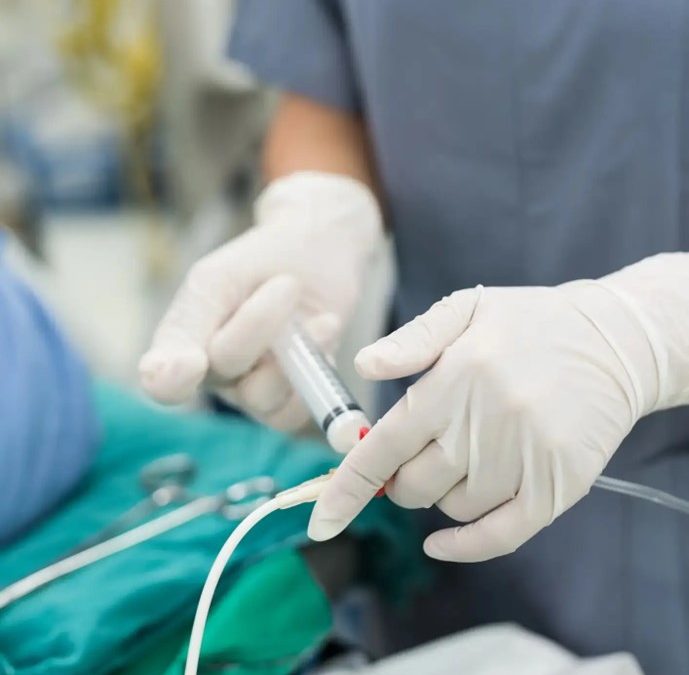Plastic surgery has become increasingly popular as people look for ways to enhance their appearance and boost their confidence. However, one of the most important aspects of any cosmetic procedure is anesthesia. The right anesthesia ensures that patients remain comfortable and pain-free during surgery. Whether someone is undergoing anesthesia for a facelift, liposuction, or another cosmetic procedure, it is essential to understand the different options available.
What Is Anesthesia and How Does It Work?
Anesthesia is a medical process that prevents pain and discomfort during surgical procedures, allowing doctors to operate safely while keeping patients comfortable. It is essential in plastic surgery, ensuring a smooth procedure by preventing pain, minimizing patient movement, and aiding efficient surgical work. Anesthesia blocks pain signals from reaching the brain and can range from numbing a small area to inducing full unconsciousness, depending on the type used. Additionally, it helps regulate vital functions like breathing and heart rate during complex procedures, impacting both the surgery and the recovery process.
Types of Anesthesia for Plastic Surgery
There are three main types of anesthesia used in plastic surgery. The right choice depends on the type of procedure and the patient’s overall health.
Local Anesthesia
Local anesthesia numbs a specific area of the body without affecting consciousness, making it ideal for minor cosmetic procedures like small skin excisions or facial surgeries. Patients remain awake but feel no pain in the treated area. A major advantage is minimal downtime, allowing for a quick recovery and a fast return to normal activities. Since it does not require deep sedation, local anesthesia is a safe and effective option for minor cosmetic enhancements.
IV Sedation
IV sedation, also known as conscious sedation, puts patients in a deeply relaxed state without full unconsciousness, making it ideal for procedures like liposuction and certain facelifts. Administered through an IV, its level can be adjusted, allowing some patients to remain responsive while others may have no memory of the procedure. Unlike general anesthesia, it does not require a breathing tube, making it a less invasive option with a typically faster recovery and fewer side effects like nausea and grogginess. This makes twilight anesthesia a comfortable and effective choice for those seeking moderate cosmetic enhancements.
General Anesthesia
General anesthesia is used for invasive plastic surgery procedures like full facelifts, tummy tucks, and extensive liposuction, inducing complete unconsciousness so patients remain unaware and pain-free. A breathing tube is typically required as the medication affects natural breathing, with an anesthesiologist monitoring vital signs for safety. While it offers the most control and eliminates pain, recovery is longer, and side effects like grogginess, nausea, and dizziness may occur. Despite this, general anesthesia is often necessary for procedures requiring precise surgical techniques and extensive tissue manipulation.
Choosing the Right Anesthesia for Your Plastic Surgery
Selecting the best anesthesia for plastic surgery depends on several key factors. Both the patient and the surgical team must consider these aspects to ensure safety and comfort.
Type and Length of the Procedure
The complexity and duration of the surgery play a major role in choosing the right anesthesia. Minor procedures, such as eyelid surgery or small skin treatments, may only require local anesthesia. Medium-length procedures, like minor facelifts or liposuction, often use sedation. For extensive surgeries, such as full facelifts or body contouring, general anesthesia is usually the best choice.
Patient Health and Medical History
A patient’s overall health condition is another crucial factor. Individuals with certain health conditions, such as heart disease or respiratory problems, may not be good candidates for general anesthesia. In such cases, the surgeon and anesthesiologist may recommend local anesthesia or twilight sedation as a safer alternative.
Surgeon and Anesthesiologist Recommendations
The surgical team will assess each patient’s unique needs and recommend the most appropriate anesthesia option. An experienced surgeon understands which type of anesthesia will provide the best outcome while minimizing risks. Consulting with both the surgeon and anesthesiologist before the procedure helps patients feel confident in their anesthesia choice.
Anesthesia for Specific Plastic Surgery Procedures
When undergoing plastic surgery, the type of anesthesia used can significantly impact the procedure and recovery. Different surgeries require different anesthesia options, depending on factors like procedure length, complexity, and patient preference. Here’s a closer look at anesthesia choices for common plastic surgeries.
Anesthesia for Facelift Procedures
A facelift, or rhytidectomy, is a procedure designed to reduce sagging skin and wrinkles on the face. Choosing the right anesthesia for a facelift is crucial for both safety and comfort.
Best Practices for Anesthesia for Facelifts
The type of anesthesia used for a facelift depends on the extent of the surgery and the patient’s health. Many surgeons recommend general anesthesia for extensive facelifts to ensure the patient remains completely still and comfortable. However, for less invasive facelifts, sedation with local anesthesia may be an option.
Local vs. General Anesthesia for Facelift Surgeries
Local anesthesia combined with sedation is sometimes used for mini-facelifts or short procedures. This method allows the patient to stay relaxed but awake, minimizing risks associated with general anesthesia. However, for full facelifts, general anesthesia is often preferred because it ensures total unconsciousness, making it easier for the surgeon to perform more complex work.
Anesthesia for Liposuction: What Works Best?
Liposuction is a popular procedure used to remove excess fat from different areas of the body. The anesthesia for liposuction depends on the treatment area and amount of fat being removed.
Anesthesia for Liposuction: Local, Sedation, or General Anesthesia?
For small areas like the chin or arms, local anesthesia with sedation is often sufficient. Tumescent liposuction, a common technique, involves injecting a numbing solution into the fat before removal, allowing the procedure to be done with minimal discomfort. For larger areas or multiple treatment sites, general anesthesia may be necessary to keep the patient comfortable.
When Local Anesthesia is Sufficient vs. When General Anesthesia is Needed
Local anesthesia works well for minor liposuction procedures, allowing patients to stay awake with little to no pain. However, when a patient is undergoing extensive fat removal, general anesthesia is the preferred option. This ensures the patient remains still and pain-free, allowing the surgeon to work efficiently.
Anesthesia for Breast Lifts and Other Procedures
Lifting surgeries typically involve removing excess skin and tightening tissue, which can be uncomfortable if performed under local anesthesia. Most lift procedures require either general anesthesia or deep sedation to ensure the patient remains comfortable throughout the surgery. Choosing the right anesthesia for a lift surgery is key to a successful outcome.
Recovery and Post-Anesthesia Care
No matter which anesthesia is used, understanding what to expect after surgery can help with a smoother recovery process.
What to Expect After Waking Up from Different Types of Anesthesia
Patients who undergo local anesthesia typically feel alert shortly after the procedure, while those who receive sedation or general anesthesia may take longer to fully wake up. Grogginess, nausea, and dizziness are common side effects of general anesthesia, but these symptoms usually fade within a few hours.
Managing Common Side Effects
Hydration and rest are essential after anesthesia. Some patients may feel slightly nauseous, especially after general anesthesia, but medications can help reduce discomfort. Light meals and avoiding sudden movements can also help ease recovery.
When to Seek Medical Attention After Anesthesia
In rare cases, complications like severe nausea, prolonged confusion, or difficulty breathing may occur. If a patient experiences extreme pain, irregular heartbeat, or difficulty waking up, medical attention should be sought immediately.
Safety Considerations
Each type of anesthesia has its own risks and benefits, which can be impacted by a patient’s pre-existing conditions. Understanding these options and discussing safety concerns with a medical professional helps patients make informed choices for a smooth and successful plastic surgery experience, ensuring comfort, safety, and optimal results.
Get The Results You Desire with Kevin R. Hanz, MD Aesthetic Plastic Surgery
Selecting the right anesthesia is an essential part of ensuring a safe and comfortable plastic surgery experience. Understanding your options and working closely with a trusted surgeon and anesthesiologist allows you to make informed decisions that align with your procedure and personal comfort. At Kevin R. Hanz, MD Aesthetic Plastic Surgery, we prioritize patient safety and individualized care, offering expert guidance every step of the way. If you’re considering plastic surgery and want to learn more about anesthesia options, visit our new Dallas-Fort Worth location. Contact us today to schedule your consultation and take the first step toward a confident transformation!


